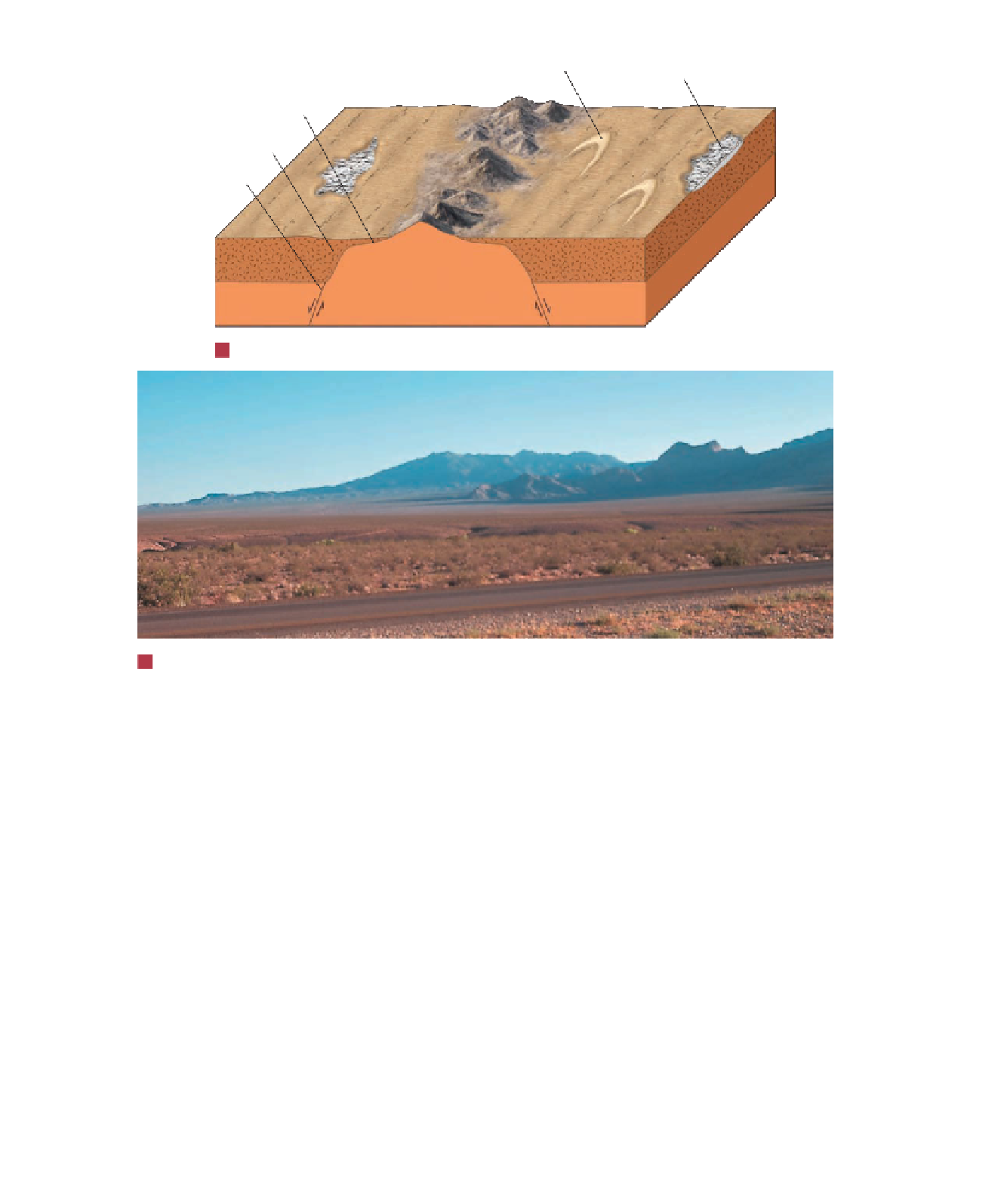Geology Reference
In-Depth Information
◗
Figure 15.24
Pediment
Barchan dune
Playa
Pediment
Basin fill
Fault
a
Pediments are erosional bedrock surfaces formed by erosion along a mountain front.
b
A pediment north of Mesquite, Nevada.
disagreement concerns how the erosion has occurred.
Although not all geologists would agree, it appears that
pediments are produced by the combined activities of lateral
erosion by streams, sheet fl ooding, and various weathering
processes along the retreating mountain front. Thus, pedi-
ments grow at the expense of the mountains, and they will
continue to expand as the mountains are eroded away or
partially buried.
Rising conspicuously above the flat plains of many
deserts are isolated steep-sided erosional remnants called
inselbergs
, a German word meaning “island mountain.”
Inselbergs have survived for a longer period of time than
other mountains because of their greater resistance to
weathering. Uluru (formerly known as Ayers Rock) is an
excellent example of an inselberg (see Chapter 17 Geo-
inSight on pages 456 and 457).
Other easily recognized erosional remnants common to
arid and semiarid regions are mesas and buttes (
Figure 15.25).
A
mesa
is a broad, flat-topped erosional remnant bounded
on all sides by steep slopes. Continued weathering and
stream erosion form isolated pillar-like structures known as
buttes.
Buttes and mesas consist of relatively easily weathered
sedimentary rocks capped by nearly horizontal, resistant rocks
such as sandstone, limestone, or basalt. They form when the
resistant rock layer is breached, which allows rapid erosion of
the less resistant underlying sediment. One of the best-known
areas of mesas and buttes in the United States is Monument
Valley on the Arizona-Utah border (Figure 15.25).
◗

Search WWH ::

Custom Search